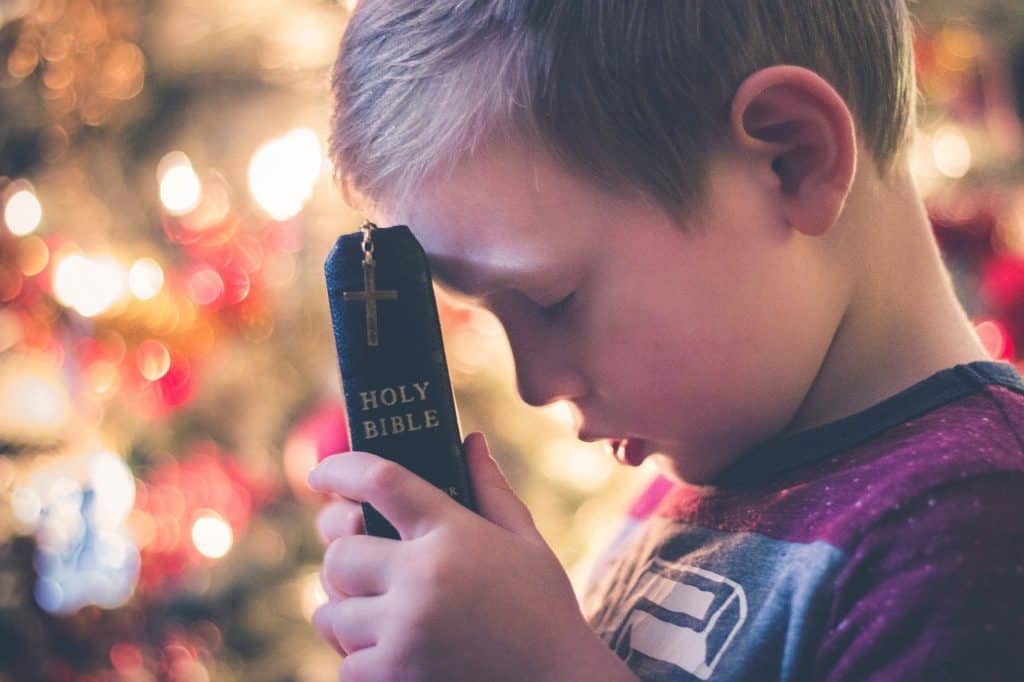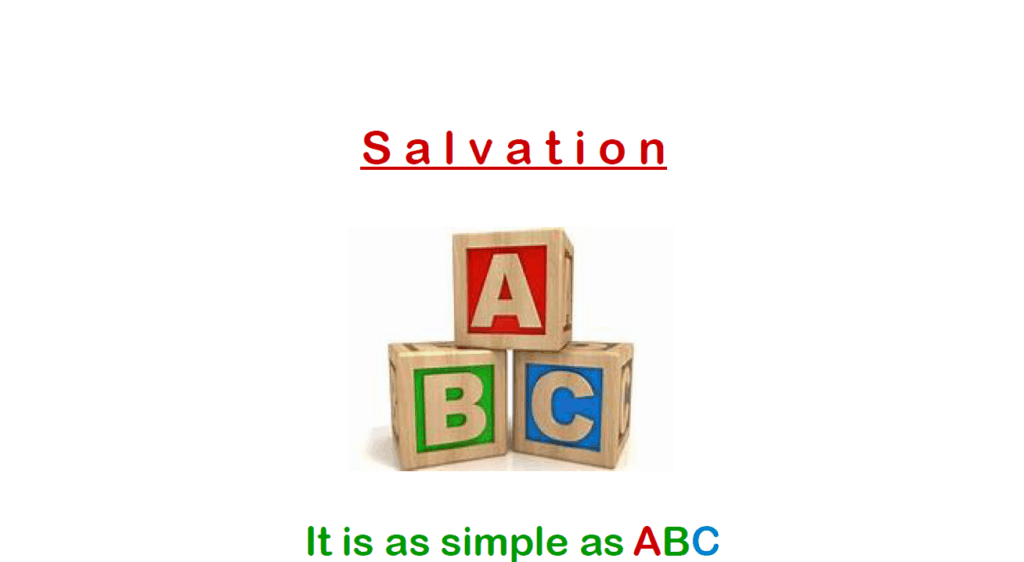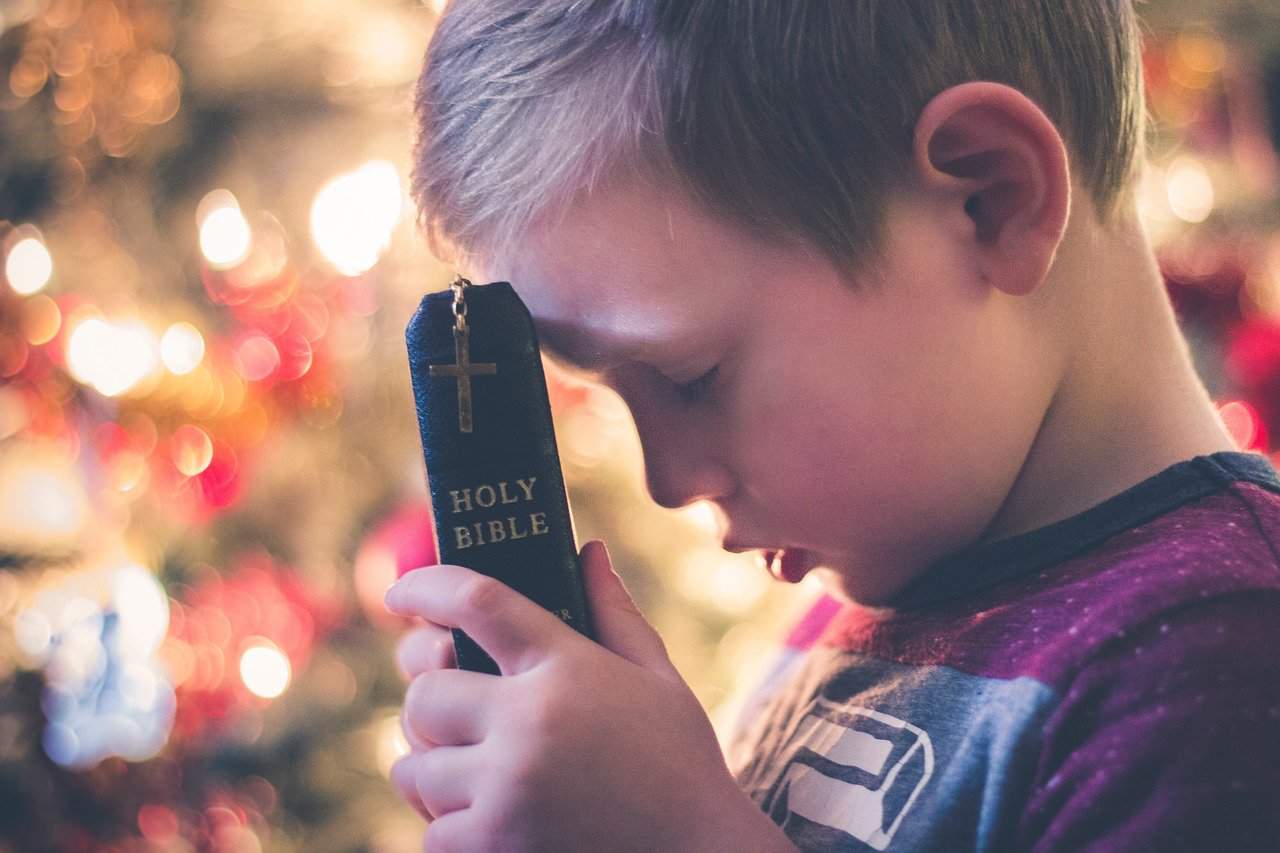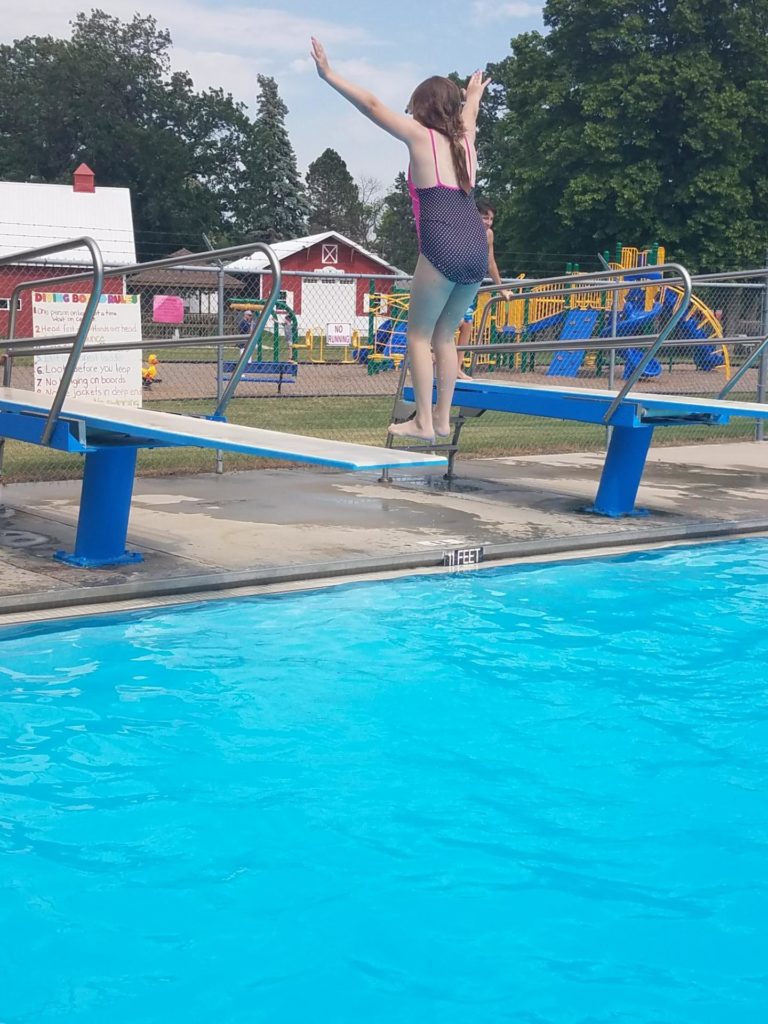Teaching your child to pray

To me, prayer has always seemed elusive. I understood it in theory, but its real meaning has consistently escaped me. What does it mean to pray? How do you go about it? Is there a special way that prayer should be done?
As a child, prayer was always a long, drawn out monotony of words, most of which I did not understand. My dad would always pray a short prayer before we ate, and then no one was allowed to leave the table until dad prayed after the meal. This prayer usually lasted about five minutes, and as a child who just wanted to get up, I experienced great difficulty in waiting these out.
Prayer involved closing my eyes and folding my hands, and if my dad ever caught me with eyes open, then I got into trouble. The other tedious prayer always took place in church. It was called the congregational prayer, in which the pastor prayed for people that I did not know and things that were beyond my knowledge. The only thing that made this prayer easier to tolerate was the fact that my dad always gave me a peppermint when it was over.
When I prayed as a child, I would pray one of two memorized prayers: either “Now I lay me down to sleep”, or “God is great, God is good”. As I grew I realized that these prayers did not touch my heart. I recited them without letting them reach my heart. They contained no meaning for me.
When I started claiming my faith as my own, I knew that I did not want to recite those memorized prayers. And besides, those prayers were for kids. So I looked for different ways to pray. At this time, I knew that God was with me and that He could hear me, but He was always unreachable: far out there and not really connected to my life.
ACTS
In one of my Bible classes, my teacher told me about the “ACTS” prayer. ACTS stands for adoration, confession, thanksgiving, and supplication. I was thankful for this prayer, because it gave me a list to follow and a “right way” to pray to God. But I have many memories of sitting on my bed trying to think my way through this formula. First I had to find words that showed my adoration of God. Then I needed to search myself to find anything that I believed I needed to confess to Him. Then I tried to think of as many things as I could to be thankful for and work my way through that list. Only after I finished the first three steps could I ask Him for what I wanted. But to me, praying this way felt more like an interview than a conversation with my Heavenly Father.
The Perfect Praying Saint
I always thought that I would never be able to truly pray. I’ve always held this picture in my mind of the perfect praying saint: This saint spends hours on her knees completely focused on God. She prays through her prayer list every day with hands folded and eyes closed, never forgetting a prayer request. She knows that God is listening to her, and has every confidence that God will answer her prayers. Her prayers are powerful, and because she is praying in the correct way, God never declines a prayer request. She prays with complete humility.
But I have never been able to pray that way. Because of this, I constantly struggle with the feeling that God is not as inclined to answer my prayers. Very seldom do I get on my knees, I have difficulty praying through a prayer list, and most of the time I can’t even form the words that I want to pray. I am just like Anne of Green Gables describes in her first book: She says that if she really wanted to pray, she would go out in the middle of a sunny field and just “feel a prayer.” More often than not, that is how I pray.
Teaching my children to pray
So when I began to teach my children how to pray, I knew that I wanted to do it differently than the way that I learned. I know that some people take comfort in liturgies and memorized prayers, but I bristle at them. None of those reach my heart and so I try to stay away from the script. I knew that I did not want to teach my children memorized prayers. When they first started learning how to pray, I did not follow any particular formula, but over the years these three things are what I have consistently taught them about prayer.
Model prayer – let them see you pray
I did not specifically start praying in front of them to teach them how to pray. I find praying out loud very difficult, but I knew that I was now the one who had to lead the prayer time. So when we read the Bible together, I pray out loud with my kids. At the beginning, I forced myself to pray the way that I was taught, making sure that I included everything that I was “supposed to” have in my prayer. But I hated the way I had to force it, and I still felt so fake.
But as my own relationship with God began to really grow, and I learned what God’s grace really means, I discovered that my prayers did not have to look like everything that I learned growing up. I also found this verse again for the first time:
And when you pray, do not use vain repetitions as the heathen do. For they think that they will be heard for their many words.
Matthew 6:7
I realized that God does not want us to pray with forced words, or come to Him as if He is a feared, stern Father. He’s not up there shaking His head in disappointment or responding with frustration at the prayers that we pray. He listens whenever we come to Him, with whatever words that we use. He knows who we are, and He does not fault us for the words we use.
Likewise the Spirit also helps in our weaknesses. For we do not know what we should pray for as we ought, but the Spirit Himself makes intercession for us with groanings which cannot be uttered.
Romans 8:27
Teach them that prayer is simply a conversation with God
It took me a long time to realize this concept. I don’t think that I even started to understand what this meant until I had my own kids. We all communicate with each other constantly throughout the day. But even though we do take time to have longer conversations, most of our communication comes in shorter bursts. We ask questions, tell each other interesting things, and use our words to connect with each other. Since we spend so much time together our communication happens constantly. Even with no words spoken, we still communicate with each other just by spending that time together.
I believe that our prayers can be the same. Since God is always present with us, He always hears our prayers. So, most of the time, my prayers happen on the spur of the moment. I share my thoughts, feelings, and requests with Him constantly throughout the day, just as I share them with my children and my husband. Amen very seldom ends my prayers because my prayers really never end. I want my children to see that God is approachable, just like my husband or I. There is no magic formula that we have to perform in order to talk to Him. He told us that we can call Him “Daddy.” That is exactly how I want my children to see and approach Him.
Ask them what I can pray for for them
This strategy I have a little more difficulty with, because I forget to ask quite often. But I picture prayer for someone the same as the times that Super Stuffy or Bear Bear ask me to talk to their dad about something. They know that they can talk to their dad at any time, but I believe that when they know that I am talking to him about their issue it adds a particular kind of hope to the situation. That intercession also brings the four of us together as a family. Prayer on behalf of someone else is the same. God hears the prayers of all His children, but the intercession that we do for each other connects us with Him and with each other in a way that nothing else can. So my prayers for my children connect us to God and connect us to each other. Also, knowing that someone is praying for their issues gives them hope that they are not alone.
Prayer brings us to God
Our main purpose in life is to glorify God and enjoy Him forever. Prayer is a tool that helps us glorify and enjoy Him. But prayer does not have to be stiff and formal. My job as a mama is to teach my children how to communicate with Him. One of my desires is that my children will love spending time with the Lord, just as they enjoy spending time with their dad and me. Teaching my children to pray in this way makes that goal come closer to that reality.
What are some ways that you teach your children how to pray? Do some ways work better than others? Share what strategies you use in the comments below!

Related posts:





